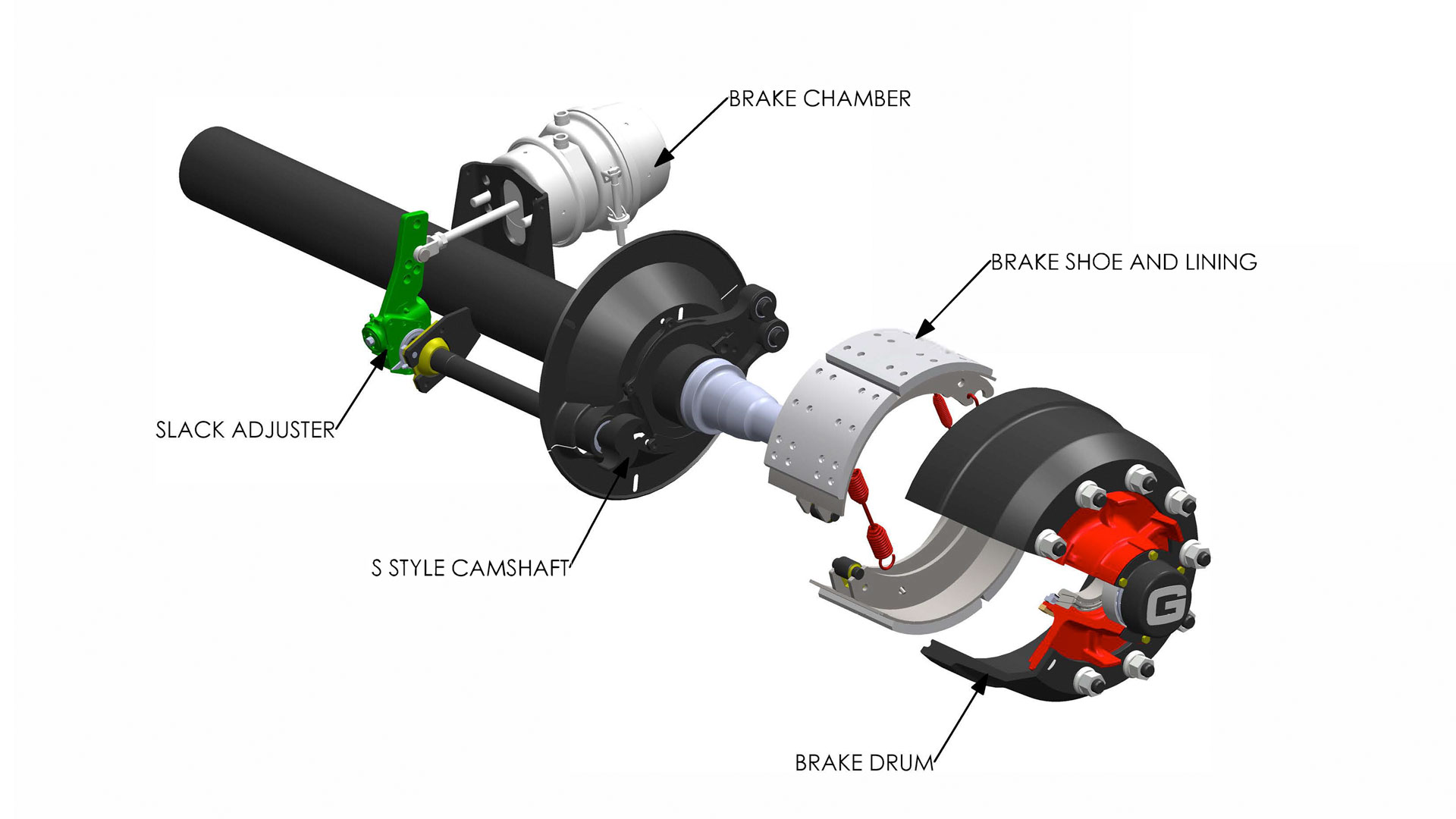When a 40 or 50 km/h tractor is pulling a trailer, it’s vital that the trailer’s braking system can cope with the speed plus weight-imposed loads and still be durable and reliable in-service. Therefore, selecting the correct ‘foundation’ brake type and size is a critical first step.

What is the foundation brake?
The brake drum and shoe form the ‘foundation’ of the trailer’s braking system. Brake capacity depends on drum diameter and shoe width. Higher load capacity axles and/or those used at higher speeds are fitted with larger foundation brakes. The wrong choice for your intended speed and maximum load could prove costly.
What is an ‘Agricultural’ specification brake?
Agricultural foundation brakes are fitted to lower capacity axles and are usually smaller, for example: ø300 x 60mm or ø400 x 80mm. Because they use ‘flat’-type operating cams which don’t provide very progressive brake control, they are unsuitable for use above speeds of 40 km/h. Typically, agricultural brakes are fitted to smaller trailers.
What is a ‘Commercial’ brake?
Commercial foundation brakes generally use larger drums and shoes, for example: ø420 x ø180, ø420 x ø220 and ø310 x ø190 (on low loaders), which are designed to withstand higher braking loads. However, their most important feature is an ‘S’-shape operating cam which provides more progressive brake control. The size of the drum is an indication of how these brakes can dissipate the heat produced during higher-speed braking. Depending on the size of the air chamber or brake ram fitted, commercial axles/brakes will enable the trailer to achieve 50% braking efficiency when fully laden. Commercial brakes are the perfect match for a modern tractor.
Drawing courtesy of Granning Axles and Suspensions




